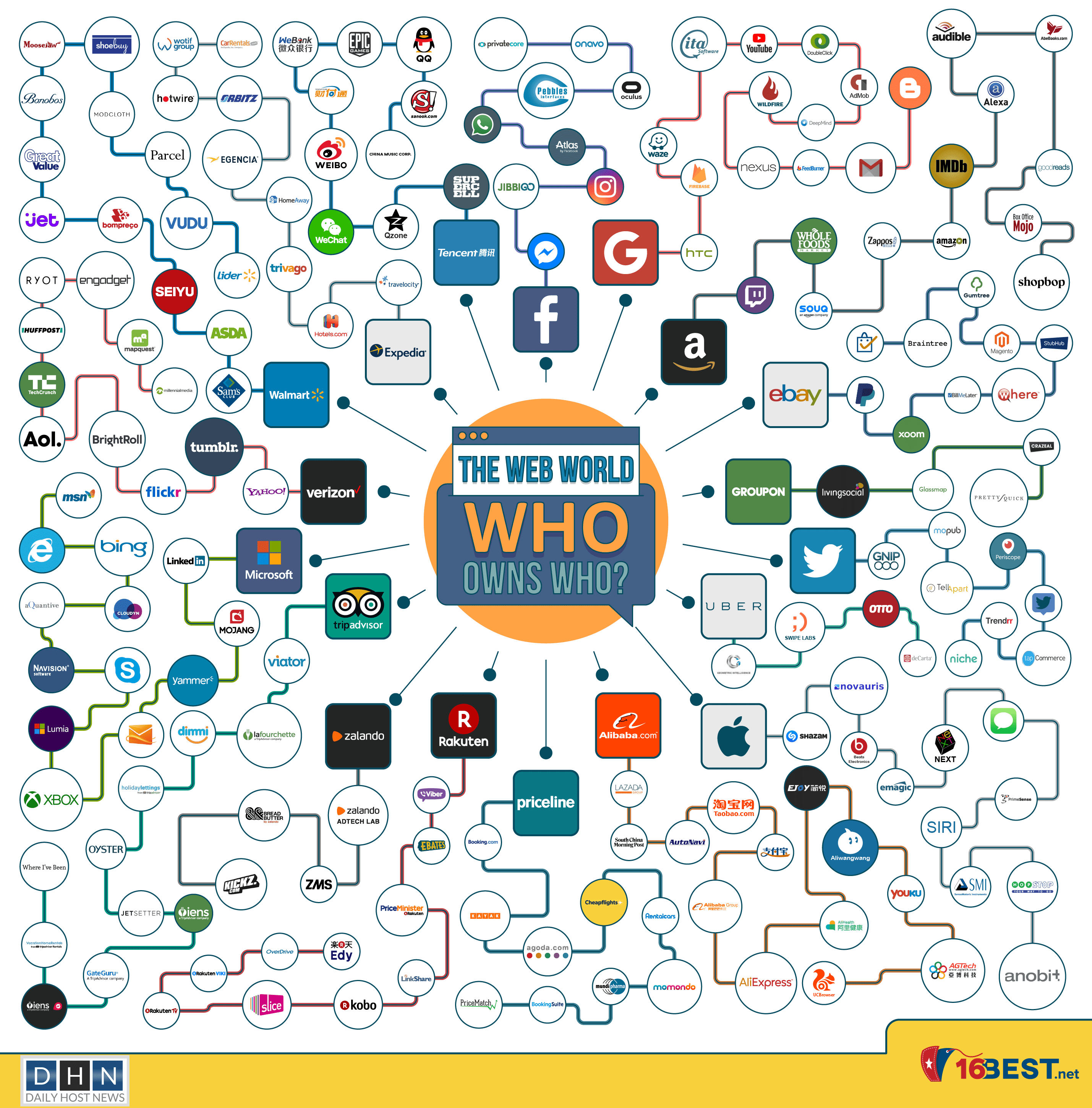There seems to be many companies around, but that’s not actually true. There are only a handful of parent companies that own hundreds of little companies.
It’s no surprise that the market is shrinking. It’s destroying the competition in the market and creating monopolies.
How are these big companies staying on top?
In this article, I’ll share with you what strategies the big companies are using to stay on top and limit competition in the market.
#1 Thinking About the Future
Companies such as Facebook, Google, Expedia and Amazon are always thinking about the future.
They analyze what they did in the past and where the current trends are going.
Facebook’s new Newsfeed algorithms will make a more personable and engaging experience for its users. Facebook listened when users said they didn’t want to see irrelevant and posts they don’t value anymore. As a result, Facebook users will see more things that they like and ads will be less clickbait-like.
Another example is Amazon’s new social media platform called Spark. They understood how its users spend their time on other social media platforms and wanted to mimic it.
Spark is a cross between Pinterest and Instagram – which is owned by Facebook – that lets users scroll through items based on their interest. If they like an item, they can make a purchase without switching apps. It simplifies things and makes the shopping experience more engaging for the user.
These are just a couple of examples of how companies are always looking forward to create a new or improved experience for their users.
#2 Looking at the Competition
Companies that spend more time looking at the competition improve their strategies more than the ones that don’t.
Big companies don’t just analyze other company’s strategies, they also figure out how those strategies could help or hurt their own business.
Facebook makes strategies that make other companies adjust to them instead of the opposite.
Taking Facebook’s new Newsfeed algorithm example, businesses who use Facebook marketing have to adjust their strategies. If they don’t, they risk not popping up on their target audience’s newsfeed with videos and other marketing posts.
#3 Analyzing Customer Data
Companies pay attention to customer statistics and data brought in through behavior.
Big companies use this data to test new strategies on a small group and figure what works and doesn’t work. Afterwards, they release solutions to the general public.
#4 Using Outside Consultants
Companies use their own company’s employees to help run their day-to-day business tasks. However, that doesn’t leave a lot of time for them to research outside of the company realm.
Companies such as Facebook and Amazon hire outside consultants to help them understand the market, their competitors, and how their strategy could improve.
#5 Attacking the Competition
Along with following the competition, big companies also attack them too.
Throughout the years, Expedia has not shied away from purchasing smaller travel-related companies. Mind, smaller doesn’t mean small at all, as the likes of Orbitz, TripAdvisor, HomeAway are anything but insignificant.
These acquisitions allowed Expedia to diversify its portfolio, get valuable personnel, eliminate competition and, ultimately, to provide a much more rounded product, meeting all the needs of the globetrotters.
Companies analyze how another company is at a disadvantage and takes advantage of it.
They attack their competition in a way that they cannot easily “fight” back.
Have you seen any of these tactics in use?
This clarifies how and why the big companies stay on top and why they buy the little ones or push them out of the market.To understand how the web world operates, one needs to know which are the parent companies and what number of small companies they own.
The Infographic below gives you an overview of – The Web World: Who owns who?
Guest Author: Karthik Reddy









